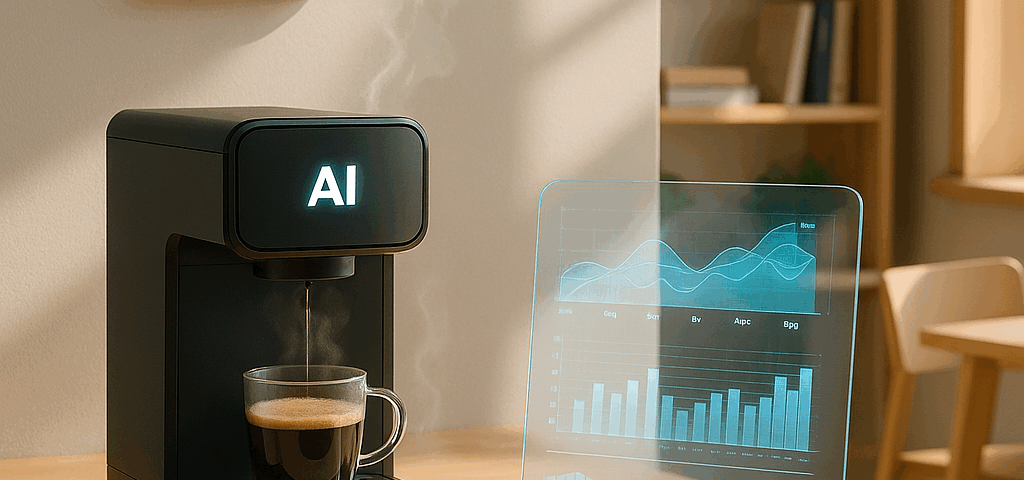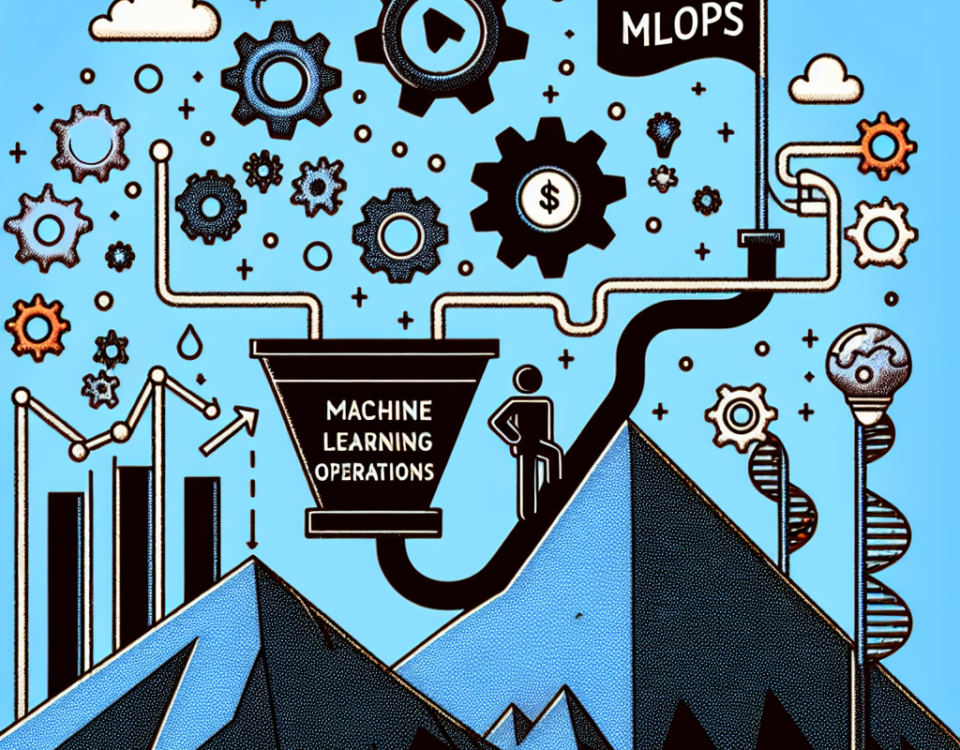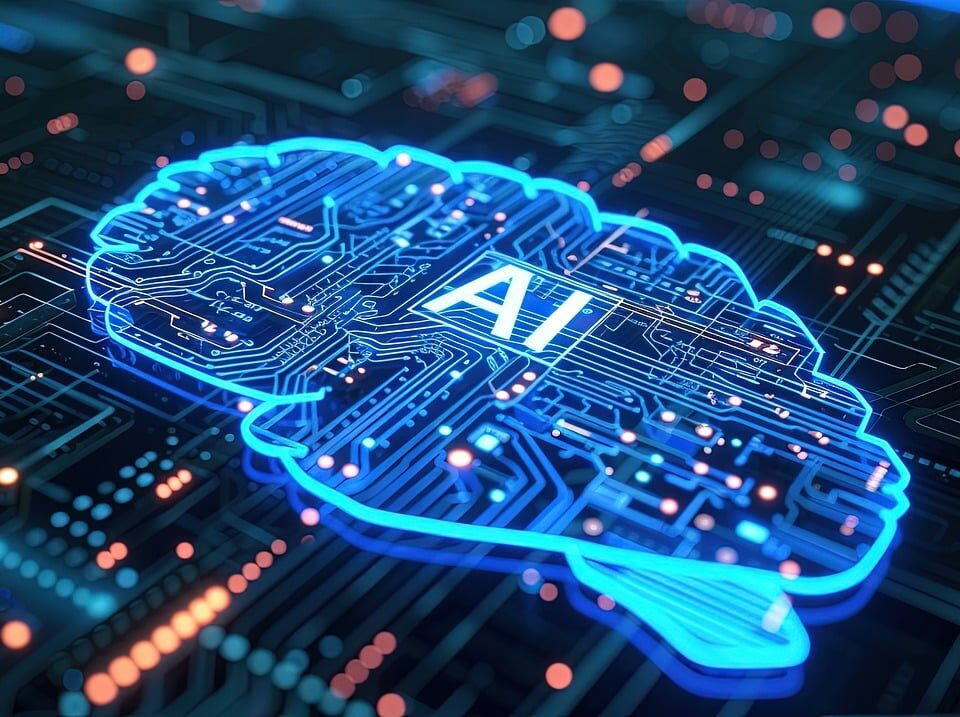
Smart Land Solution Introduces “iwin” at Iran Expo 2025
May 12, 2025Introduction: AI Meets the IoT
The convergence of Artificial Intelligence chips and the Internet of Things (IoT) is revolutionizing how machines, sensors, and internet-connected devices communicate. At the core of this transformation are AI chips—specialized hardware designed to make AI faster and more efficient. As a result, edge devices like sensors and mobile gadgets are becoming smarter and more responsive, with significantly reduced dependence on the cloud [1].
Understanding AI Chips
AI processors, also known as Artificial Intelligence chips, are built to handle intensive AI workloads. Unlike traditional CPUs, they support high-performance matrix computations, parallel processing, and low power usage. Therefore, they are ideal for deep learning, neural networks, and real-time inference tasks [2].
Types of AI Chips Used at the Edge
There are several types of AI chips, each optimized for a different function. For instance:
-
Graphics Processing Units (GPUs): Originally built for rendering graphics, they are now crucial in training large AI models [2].
-
Tensor Processing Units (TPUs): Specifically developed by Google, they are highly efficient for deep learning [3].
-
Field Programmable Gate Arrays (FPGAs): These reconfigurable chips are perfect for applications that require low latency.
-
Application-Specific Integrated Circuits (ASICs): Although fixed in function, they provide maximum efficiency for specific tasks [4].
-
Neural Processing Units (NPUs): These emerging chips simulate brain-like parallel processing and are especially useful for mobile and edge use cases [2].
Why AI Chips Matter in Edge Devices
Edge AI refers to deploying models on devices near the data source—such as smartphones or IoT nodes [1]. This design offers numerous benefits:
-
Low Latency: Because processing happens on the device, responses are instant.
-
Bandwidth Efficiency: Instead of sending all raw data, only relevant insights are transmitted.
-
Improved Privacy: Since data doesn’t leave the device, it remains secure.
-
Energy Efficiency: These chips are designed to consume less power, which is crucial for battery-operated devices [2].
In addition, running models on edge devices helps reduce operational costs and network dependency.
Real-World Use Cases
Artificial Intelligence chips are already powering many cutting-edge applications. For example:
-
Smart Surveillance Cameras: NPUs enable on-device facial recognition, reducing the need for cloud processing.
-
Healthcare Wearables: These devices use AI chips to analyze health metrics in real time [2].
-
Industrial Sensors: FPGAs help conduct predictive maintenance, improving reliability [4].
-
Autonomous Vehicles: ASICs allow instant decision-making for object detection and navigation [4].
As you can see, AI chips are transforming entire industries by enabling real-time intelligence.
Who’s Leading the AI Chip Race?
Several companies are at the forefront of edge AI chip development [5]. For instance:
| Company | Notable Chips | Use Cases |
|---|---|---|
| NVIDIA | Jetson Series (Nano, Xavier) | Robotics, drones, industrial AI [6] |
| Edge TPU | Smart cameras, embedded AI systems [3] | |
| Intel | Movidius Myriad X, Loihi | Vision processing, neuromorphic AI |
| Apple | A-Series Neural Engine | On-device Siri, iPhone photography |
| Qualcomm | Snapdragon AI Engine | XR, mobile, and smart home devices |
| Hailo | Hailo-8 | Smart cities, automotive systems [7] |
Furthermore, startups like Hailo are challenging big players with highly efficient and compact designs.
Design Challenges for AI at the Edge
Despite their benefits, AI chips face several challenges. For instance:
-
Thermal Constraints: Edge devices are often compact, making heat dissipation difficult.
-
Power Limitations: Battery life must be preserved without sacrificing performance.
-
Interoperability: Chips must work with various frameworks and devices.
-
Security: Unauthorized access to models and data must be prevented.
-
Affordability: Cost remains a concern for large-scale edge AI deployment [2].
Nevertheless, engineers and chip designers are working actively to solve these issues.
Future Trends in AI Chip Development
Looking ahead, several trends are shaping the future of Artificial Intelligence chips:
-
Neuromorphic Computing: Inspired by the brain, this approach enables chips to process data more intuitively [5].
-
3D Chip Stacking: This technique increases performance without expanding footprint.
-
Edge-to-Cloud Integration: Rather than replacing the cloud, edge devices will work in tandem with it [1].
-
Model Compression: Technologies like quantization and pruning allow large models to run on small devices [2].
As a result, edge AI will become even more accessible and powerful.
Conclusion: The Intelligent Edge is Here
The evolution of Artificial Intelligence chips is making the IoT ecosystem smarter, faster, and more capable. From healthcare to transportation and smart homes, these chips are enabling real-time decisions and transforming user experiences. In the near future, we can expect even more powerful edge devices that operate autonomously while maintaining efficiency and security.
References
- Shi, W., et al. (2016). “Edge computing: Vision and challenges.” IEEE Internet of Things Journal.
- Sze, V., et al. (2017). “Efficient Processing of Deep Neural Networks: A Tutorial and Survey.” Proceedings of the IEEE.
- Jouppi, N. P., et al. (2017). “In-datacenter performance analysis of a Tensor Processing Unit.” ISCA.
- Chen, Y., et al. (2014). “Diannao: A small-footprint high-throughput accelerator for ubiquitous machine-learning.” ASPLOS.
- Edge AI Hardware Landscape. (2023). ABI Research Reports.
- NVIDIA Jetson Platform. (2025). https://developer.nvidia.com/embedded/jetson
- Hailo.ai. (2024). (2024). https://hailo.ai










